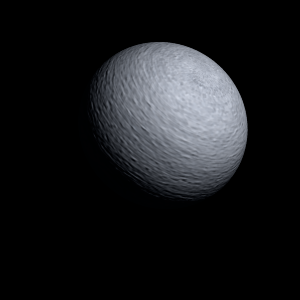|
|
Space Astro
|
Info for exoplanet "Enrosa"
| Scientific (actual) data |
|---|
| Name | NGTS-25 b |
| Planet status | Confirmed |
| Planet mass | 0.639 |
| Radius | 1.023 |
| Orbital period | 2.82309 |
| Semi major axis | 0.0388 |
| Orbit eccentricity | 0 |
| Inclination | 89.34 |
| Discovered | 2022 |
| Updated | 2022-11-03 |
| Tzero tr | 2458200 |
| Impact parameter | 0.113 |
| K | 100 |
| Temperature (kelvin) | 1101 |
| Publication | Published in a refereed paper |
| Detection type | Primary Transit |
| Mass measurement type | Radial Velocity |
| Radius measurement type | Primary Transit |
| Star name | NGTS-25 |
| Right ascension | 307.42° |
| Declination | -39.03° |
| Mag v | 14.3 |
| Star distance | 517 |
| Star metallicity | 0.13 |
| Star mass | 0.91 |
| Star radius | 0.86 |
| Star sp type | K0V |
| Star age | 3.49 |
| Star temperature | 5321 |
| Wikipedia article | NGTS-25 b |
Back
| |
| Fictional info (?) |
|---|
| Suggested name | Enrosa |
| Planet type | Hot gas giant |
| The polar regions are constantly below 162°K (-111°C).
It may have had water vapor oceans in the past, but these would have vaporized as the temperature rose due to a runaway greenhouse effect. The water vapor has probably photodissociated, and the free hydrogen peroxide has been swept into interplanetary space by the solar wind because of the lack of a planetary magnetic field. |
| Atmosphere | Hydrogen peroxide | 47% |
| Hydrogen deuteride (HD) | 35% |
| Water vapor | 13% |
| Carbon dioxide | 3.6% |
| Neon | 0.0063% |
| Atmospheric pressure | 0.25 bar |
 |
| No known satellites |
| Google search for Enrosa |
|
Website by Joachim Michaelis
|
|
|
|